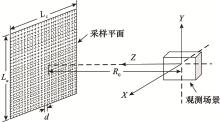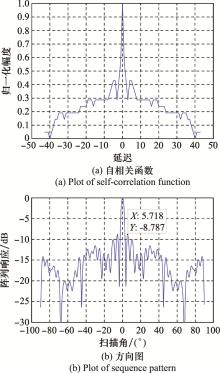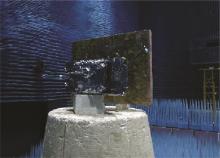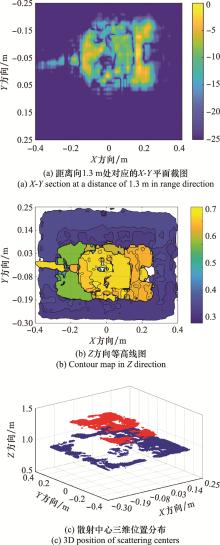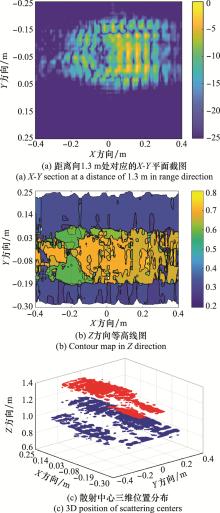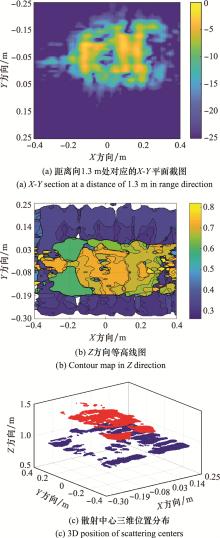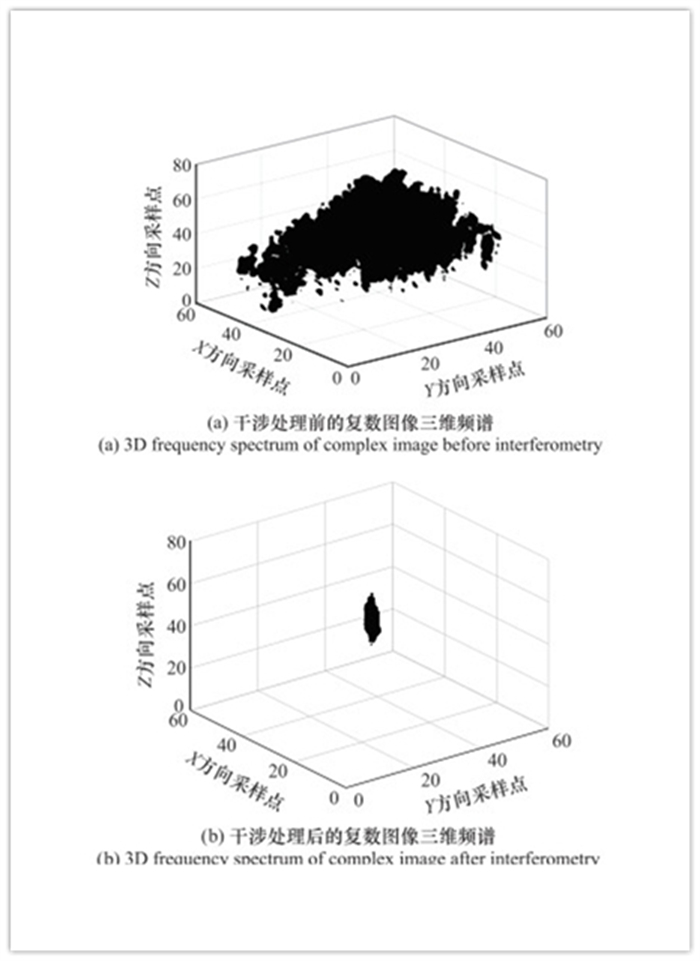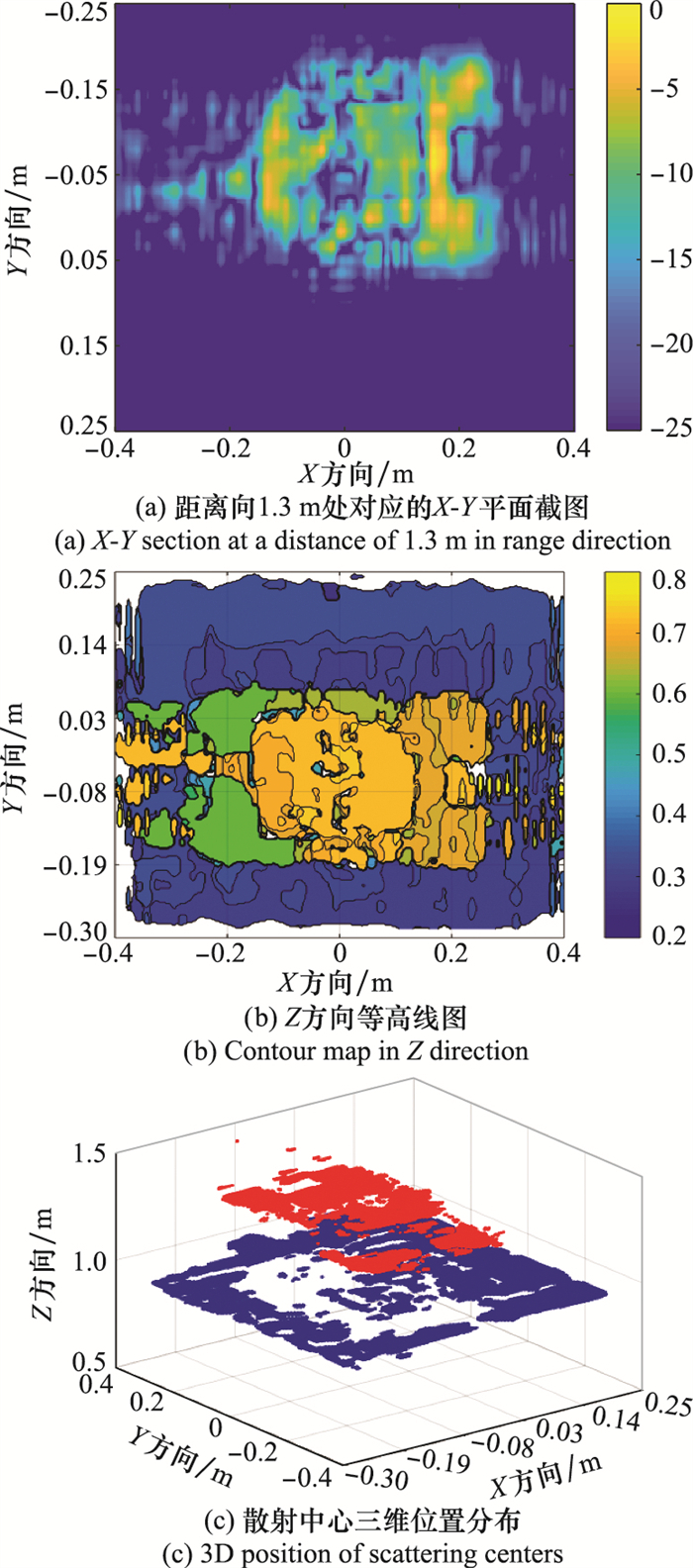Systems Engineering and Electronics ›› 2022, Vol. 44 ›› Issue (9): 2783-2790.doi: 10.12305/j.issn.1001-506X.2022.09.11
• Sensors and Signal Processing • Previous Articles Next Articles
Radar target three-dimensional scattering centers inversion based on compressed sensing and frequency sparsity
He TIAN*, Chunzhu DONG, Hongcheng YIN
- Science and Technology on Electromagnetic Scattering Laboratory, Beijing Institute ofEnvironmental Features, Beijing 100854, China
-
Received:2020-11-07Online:2022-09-01Published:2022-09-09 -
Contact:He TIAN
CLC Number:
Cite this article
He TIAN, Chunzhu DONG, Hongcheng YIN. Radar target three-dimensional scattering centers inversion based on compressed sensing and frequency sparsity[J]. Systems Engineering and Electronics, 2022, 44(9): 2783-2790.
share this article
| 1 | 殷红成, 郭琨毅. 目标电磁散射特性研究的若干热点和难点问题[J]. 电波科学学报, 2020, 35 (1): 128- 134. |
| YIN H C , GUO K Y . Hot-topics and difficult problems in the research filed of electromagnetic scattering characteristics of targets[J]. Chinese Journal of Radio Science, 2020, 35 (1): 128- 134. | |
| 2 | 文贡坚, 朱国强, 殷红成, 等. 基于三维电磁散射参数化模型的SAR目标识别方法[J]. 雷达学报, 2017, 6 (2): 115- 135. |
| WEN G J , ZHU G Q , YIN H C , et al. SAR ATR based on 3D parametric electromagnetic scattering model[J]. Journal of Radars, 2017, 6 (2): 115- 135. | |
| 3 |
KELLER J B . Geometrical theory of diffraction[J]. Journal of the Optical Society of America, 1962, 52 (2): 116- 130.
doi: 10.1364/JOSA.52.000116 |
| 4 | 洪文, 王彦平, 林赟, 等. 新体制SAR三维成像技术研究进展[J]. 雷达学报, 2018, 7 (6): 633- 654. |
| HONG W , WANG Y P , LIN Y , et al. Research progress on three-dimensional SAR imaging techniques[J]. Journal of Radars, 2018, 7 (6): 633- 654. | |
| 5 |
BAO Q , LIN Y , HONG W , et al. Holographic SAR tomography image reconstruction by combination of adaptive imaging and sparse bayesian inference[J]. IEEE Geoscience and Remote Sensing Letters, 2017, 14 (8): 1248- 1252.
doi: 10.1109/LGRS.2017.2704601 |
| 6 | 田鹤, 李道京, 祁春超. 频域稀疏毫米波人体安检成像处理和快速成像稀疏阵列设计[J]. 雷达学报, 2018, 7 (3): 376- 386. |
| TIAN H , LI D J , QI C C . Millimeter-wave human security imaging based on frequency-domain sparsity and rapid imaging sparse array architecture[J]. Journal of Radars, 2018, 7 (3): 376- 386. | |
| 7 | 丁赤飚, 仇晓兰, 徐丰, 等. 合成孔径雷达三维成像——从层析、阵列到微波视觉[J]. 雷达学报, 2019, 8 (6): 693- 709. |
| DING C B , QIU X L , XU F , et al. Synthetic aperture radar three-dimensional imaging-from TomoSAR and array InSAR to microwave vision[J]. Journal of Radars, 2019, 8 (6): 693- 709. | |
| 8 |
ZHAO P F , LIU K , ZOU H , et al. Multi-stream convolutional neural network for SAR automatic target recognition[J]. Remote Sensing, 2018, 10 (9): 1473.
doi: 10.3390/rs10091473 |
| 9 | 滕秀敏, 李道京. 机载交轨稀疏阵列天线雷达的下视三维成像处理[J]. 电子与信息学报, 2012, 34 (6): 1311- 1317. |
| TENG X M , LI D J . Downward-looking 3D imaging processing for airborne cross-track sparse array radar[J]. Journal of Electronics & Information Technology, 2012, 34 (6): 1311- 1317. | |
| 10 | 张清娟, 李道京, 李烈辰. 连续场景的稀疏阵列SAR侧视三维成像研究[J]. 电子与信息学报, 2013, 35 (5): 1097- 1102. |
| ZHANG Q J , LI D J , LI L C . Research on continuous scene side-looking 3D imaging based on sparse array[J]. Journal of Electronics & Information Technology, 2013, 35 (5): 1097- 1102. | |
| 11 | TIAN H, LI D J, LI L C. Simulation of signal reconstruction based sparse flight downward-looking 3D imaging SAR[C]//Proc. of the IEEE International Geoscience and Remote Sensing Symposium, 2015: 3762-3765. |
| 12 |
TIAN H , LI D J . Sparse flight array SAR downward-looking 3-D imaging based on compressed sensing[J]. IEEE Geoscience and Remote Sensing Letters, 2016, 13 (10): 1395- 1399.
doi: 10.1109/LGRS.2016.2560238 |
| 13 | TIAN H , LI D J . Sparse sampling-based microwave 3-D imaging using interferometry and frequency-domain principal component analysis[J]. IET Radar, Sonar & Navigation, 2017, 11 (12): 1886- 1891. |
| 14 |
GOLOMB S , SCHOLTZ R . Generalized Barker sequences[J]. IEEE Trans.on Information Theory, 1965, 11 (4): 533- 537.
doi: 10.1109/TIT.1965.1053828 |
| 15 | 杨波. 一种设计组合巴克码脉冲压缩旁瓣抑制滤波器的新方法[J]. 现代雷达, 2001, 23 (5): 41- 45. |
| YANG B . A new method for designing range-sidelobe suppression filter for combined Barker code[J]. Modern Radar, 2001, 23 (5): 41- 45. | |
| 16 | OPPENHEIM A V, WILLSKY A S, NAWAB S H. 信号与系统[M]. 第2版. 刘树棠译. 北京: 电子工业出版社, 2009. |
| OPPENHEIM A V, WILLSKY A S, NAWAB S H. Signals and systems[M]. 2nd ed. LIU S T trans. Beijing: Publishing House of Electronics Industry, 2009. | |
| 17 | ZHANG T, YANG B. Big data dimension reduction using PCA[C]//Proc. of the IEEE International Conference on Smart Cloud, 2016: 152-157. |
| 18 | 徐宗本, 吴一戎, 张冰尘, 等. 基于L1/2正则化理论的稀疏雷达成像[J]. 科学通报, 2018, 63 (14): 1307- 1319. |
| XU Z B , WU Y R , ZHANG B C , et al. Sparse radar imaging based on L1/2 regularization theory[J]. Chinese Science Bulletin, 2018, 63 (14): 1307- 1319. | |
| 19 |
CANDES E J , WAKIN M B . An introduction to compressive sampling[J]. IEEE Signal Processing Magazine, 2008, 25 (2): 21- 30.
doi: 10.1109/MSP.2007.914731 |
| 20 | CANDES E. Compressive sampling[C]//Proc. of the International Congress of Mathematicians, 2006: 1-20. |
| 21 |
DONOHO D L . Compressed sensing[J]. IEEE Trans.on Information Theory, 2006, 52 (4): 1289- 1306.
doi: 10.1109/TIT.2006.871582 |
| 22 | BARANIUK R, STEEGHS P. Compressive radar imaging[C]//Proc. of the IEEE Radar Conference, 2007: 128-133. |
| 23 |
ALIAKBAR A G , RYAN J R , MARYAM R , et al. Joint waveform optimization and adaptive processing for random phase radar signals[J]. IEEE Trans.on Aerospace and Electronic Systems, 2015, 51 (4): 2627- 2640.
doi: 10.1109/TAES.2015.130731 |
| 24 | 田鹤, 李道京. 稀疏重航过阵列SAR运动误差补偿和三维成像方法[J]. 雷达学报, 2018, 7 (6): 717- 729. |
| TIAN H , LI D J . Motion compensation and 3-D imaging algorithm in sparse flight based airborne array SAR[J]. Journal of Radars, 2018, 7 (6): 717- 729. | |
| 25 | 田鹤, 于海锋, 朱宇, 等. 基于频域稀疏压缩感知的星载SAR稀疏重航过3维成像方法[J]. 电子信息学报, 2020, 42 (8): 2021- 2028. |
| TIAN H , YU H F , ZHU Y , et al. Sparse flight 3-D imaging of spaceborne SAR based on frequency domain sparse compressed sensing[J]. Journal of Electronics & Information Technology, 2020, 42 (8): 2021- 2028. | |
| 26 | HU C F, XU J D, LI N J, et al. Signal processing techniques in high-resolution RCS measurement system[C]//Proc. of the 4th IEEE Conference on Industrial Electronics and Applications, 2009: 586-588. |
| 27 | TIAN H, LI D J, HU X. Microwave three-dimensional imaging under sparse sampling based on MURA code[C]//Proc. of the IEEE International Geoscience and Remote Sensing Symposium, 2016: 7411-7414. |
| 28 | 田鹤, 李道京, 潘洁, 等. 基于修正均匀冗余阵列正反编码的稀疏阵列SAR下视三维成像处理[J]. 电子与信息学报, 2017, 39 (9): 2203- 2211. |
| TIAN H , LI D J , PAN J , et al. Downward-looking 3D Imaging processing of sparse array SAR based on modified uniformly redundant arrays positive and negative coding[J]. Journal of Electronics and Information Technology, 2017, 39 (9): 2203- 2211. | |
| 29 |
MARIO L , FEDERICA M , VITO P , et al. Closed-form evaluation of the second-order statistical distribution of the interferometric phases in dual baseline SAR systems[J]. IEEE Trans.on Signal Processi, 2010, 58 (3): 1698- 1707.
doi: 10.1109/TSP.2009.2037849 |
| 30 |
ZEBKER H A , CHEN K . Accurate estimation of correlation in InSAR observations[J]. IEEE Geoscience and Remote Sensing Letters, 2005, 2 (2): 124- 127.
doi: 10.1109/LGRS.2004.842375 |
| 31 |
NEUMANN M , FERRO-FAMIL L , REIGBER A . Estimation of forest structure, ground, and canopy layer characteristics from multibaseline polarimetric interferometric SAR data[J]. IEEE Trans.on Geoscience and Remote Sensing, 2010, 48 (3): 1086- 1104.
doi: 10.1109/TGRS.2009.2031101 |
| 32 | ROVSSEAV D , DELAHAIES , CHAPEAV-BLONDEAV F . Structural similarity measure to assess improvement by noise in nonlinear image transmission[J]. IEEE Signal Processing Letters, 2010, 17 (1): 36- 39. |
| [1] | Chenrui SHI, Lu TIAN, Zhan XU, Ruxin ZHI, Jinhui CHEN. Effectiveness evaluation method of emergency communication and sensing equipment based on PSO-BP [J]. Systems Engineering and Electronics, 2022, 44(11): 3455-3462. |
| [2] | Lu GUO, Xiaodong LIU, Dongtao WEI, Pu ZHU. Extraction method of missile equipment health characterization parameters based on improved PCA [J]. Systems Engineering and Electronics, 2022, 44(10): 3275-3281. |
| [3] | Dongfang XUE, Xiaoxiu ZHU, Wenhua HU, Baofeng GUO, Huiyan ZENG. Bi-ISAR imaging based on weighted l1 norm optimization algorithm [J]. Systems Engineering and Electronics, 2021, 43(4): 944-953. |
| [4] | Qiang HUANG, Jianguo YU, Pengfei SHI. Complex ballistic group targets tracking based on adaptive compressed sensing [J]. Systems Engineering and Electronics, 2020, 42(8): 1710-1717. |
| [5] | Shengnan YAN, Mingxin LIU. Distributed cooperative compressed spectrum sensing scheme based on support set fusion [J]. Systems Engineering and Electronics, 2020, 42(2): 466-472. |
| [6] | Hui ZHAO, Lufa FANG, Tianqi ZHANG, Zhiwei LI, Xianming XU. Image compressive sensing reconstruction via group sparse representation and weighted total variation [J]. Systems Engineering and Electronics, 2020, 42(10): 2172-2180. |
| [7] | Yuan LUO, Jiaojiao DANG, Zuxun SONG, Baoping WANG. Achieving adaptive compressive spectrum sensing for cognitive radio [J]. Systems Engineering and Electronics, 2020, 42(1): 15-22. |
| [8] | Yuzhao MA, Nan CHEN, Xinglong XIONG. Wind shear warning algorithm based on PCA and phase difference correction [J]. Systems Engineering and Electronics, 2020, 42(1): 52-60. |
| [9] | Luo ZUO, Jun WANG, Gang CHEN, Yaqi DENG, Yuanyuan WEN. Super-resolution DOA estimation method of passive bistatic radar based on TLS-CS [J]. Systems Engineering and Electronics, 2020, 42(1): 61-66. |
| [10] | ZHU Sining, ZHANG Licheng, NING Jinzhong, JIN Minglu. Threshold multipath sparsity adaptive image reconstruction algorithm based on compressed sensing [J]. Systems Engineering and Electronics, 2019, 41(10): 2191-2197. |
| [11] | YUAN Hui, WANG Chunyang, AN Lei, LI Xin. ECCM scheme against interrupted sampling repeater jamming based on compressed sensing signal reconstruction [J]. Systems Engineering and Electronics, 2018, 40(4): 717-725. |
| [12] | YU Lu, QU Jianling, GAO Feng, TIAN Yanping, SHEN Jiangjiang. Missing vibration data reconstruction using compressed sensing based on over complete dictionary [J]. Systems Engineering and Electronics, 2017, 39(8): 1871-1877. |
| [13] | WANG Cai-yun1, XU Jing2. Improved optimization algorithm for measurement matrix in compressed sensing [J]. Systems Engineering and Electronics, 2015, 37(4): 752-756. |
| [14] | ZHAO Rui-si, WU Shao-hua, WANG Hai-xu, ZHANG Qin-yu. High-performance decoding method based on double sparse dictionary in DCVS system [J]. Systems Engineering and Electronics, 2015, 37(11): 2634-2639. |
| [15] | CAO Xinyuan,CHEN Mingsheng,WU Xianliang. Application of compressed sensing to solution of three dimensional electromagnetic scattering problems by MoM [J]. Journal of Systems Engineering and Electronics, 2013, 35(6): 1143-1147. |
| Viewed | ||||||
|
Full text |
|
|||||
|
Abstract |
|
|||||
